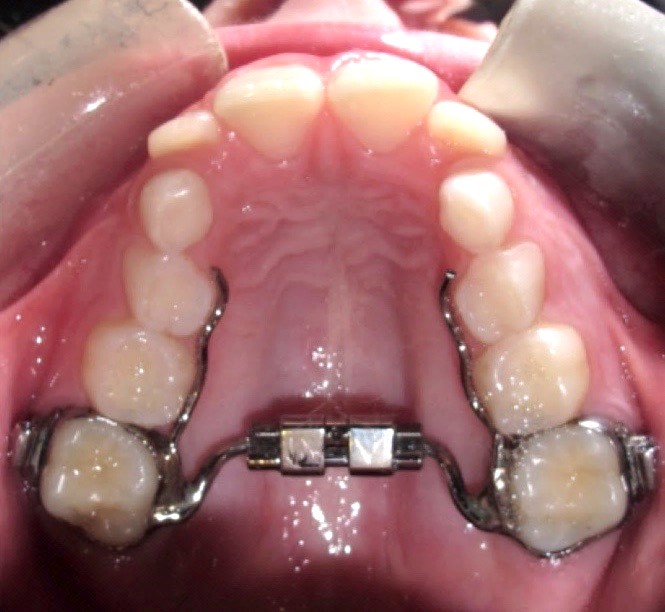 What is a rapid palatal expander?
What is a rapid palatal expander?
An orthodontic expander is an appliance that gradually widens your child’s jaw and palate, allowing room for their adult teeth to grow in normally or to correct jaw misalignment. Every orthodontic expander is custom-made to fit a child’s natural palate.
An expander is a specially made appliance used to widen the two halves of the top jaw, also known as the palate or maxilla. The two halves are joined together by a “suture” in the center of the roof of the mouth. The expander is attached to the upper back teeth and eases the suture apart, which makes the jaw wider. As the jaw expands, new bone fills in between the two halves of the palate.
An expander has many benefits. It can widen the upper arch so that the upper teeth fit better with the lower teeth, creating a better bite. Also widening the palate can make room for crowded teeth to align, which can often prevent the need for extraction of permanent teeth. A high palate and narrow arch may restrict breathing passages. Studies have shown that expanders can widen air passages and result in better breathing. Lastly, expanders contribute to a broader, more attractive smile. Expansion is easiest and results are most stable when performed on a growing child or teen.
While there may be some initial discomfort when an expander is placed just because there has never been anything like that attached to the teeth before, for the most part upper arch expansion is relatively painless. Patients report that they feel pressure on the teeth, in the roof of the mouth as their expander is activated. This pressure fades within minutes.
Besides pressure, you can also expect your child to speak differently for the first few days. Additionally, you may hear them slurping as their mouth creates extra saliva after expander cementation. One of the most visible signs that the suture is opening (the desired effect) is the appearance of a space between the two front teeth. The space is created as the expander pushes the two halves of the palate in opposite directions. Once you have stopped activating the expander, it is normal for the space to close spontaneously.
Activation of an expander is usually done by a parent, guardian, or someone other than the patient. On the day the expander is placed, we give you a key that inserts into an opening in the activation portion of the expander.
There are certain foods that cannot be eaten while the expander is in place. These will include chewy, sticky sugary foods.
One common problems that can arise when having an expander is that food can become trapped between the expander and the roof of the mouth or difficulty making the activation turn. When the expander is placed, we show you how to clean around it. However, if food does get stuck, you can swish or gargle with water, or take a cotton swab and gently wipe the palate of the mouth.
At Noorani Orthodontics, we believe every child deserves a chance at a healthy, confident smile. If an orthodontic expander is recommended for your child, Dr. Noorani has 20 years of orthodontic experience helping children successfully navigate early orthodontic treatment. Contact us today to book your free, initial early orthodontic consultation at of our three locations.